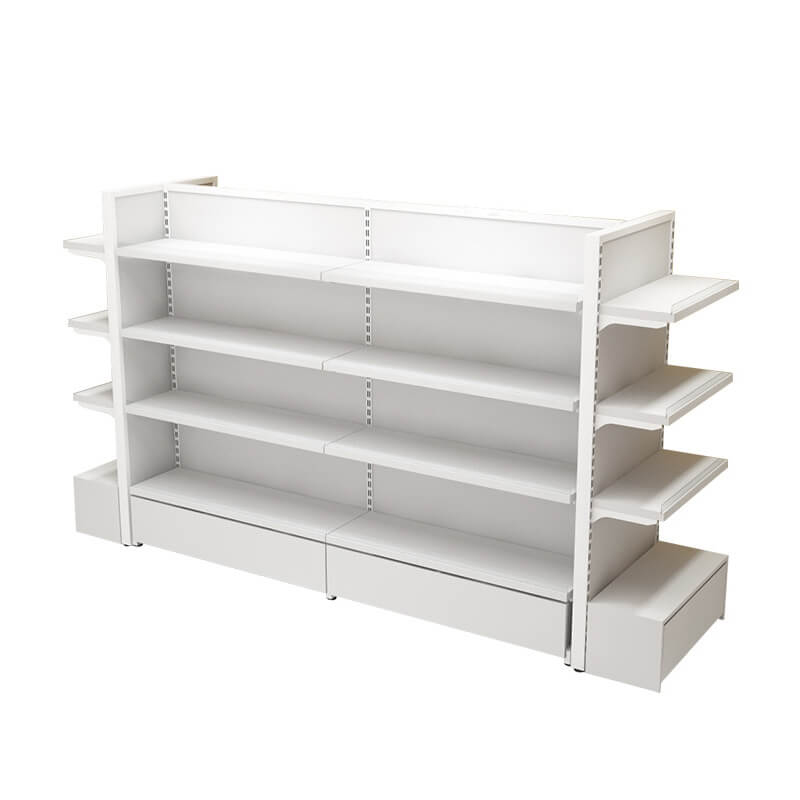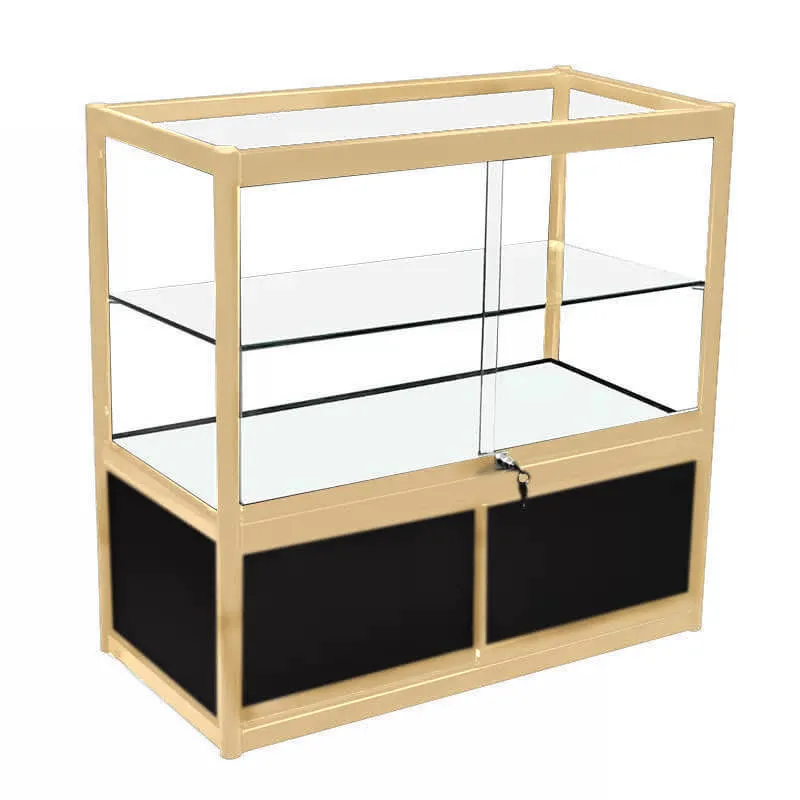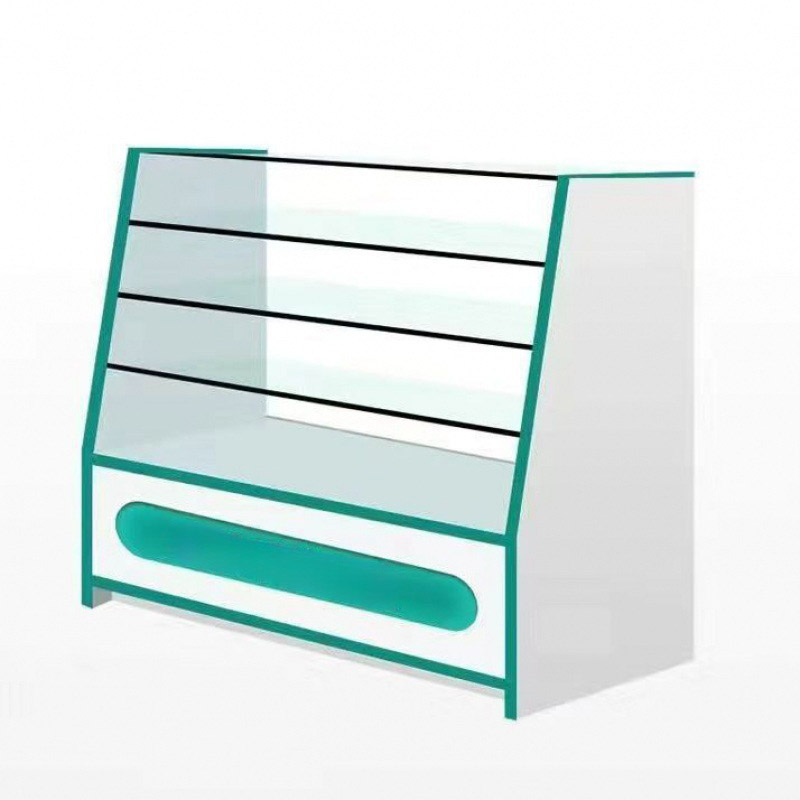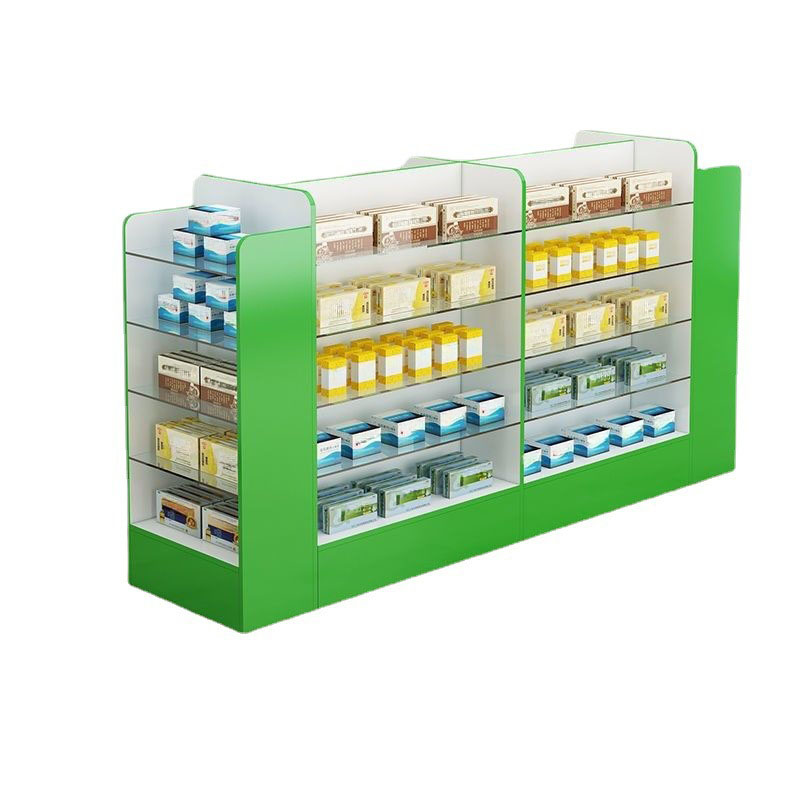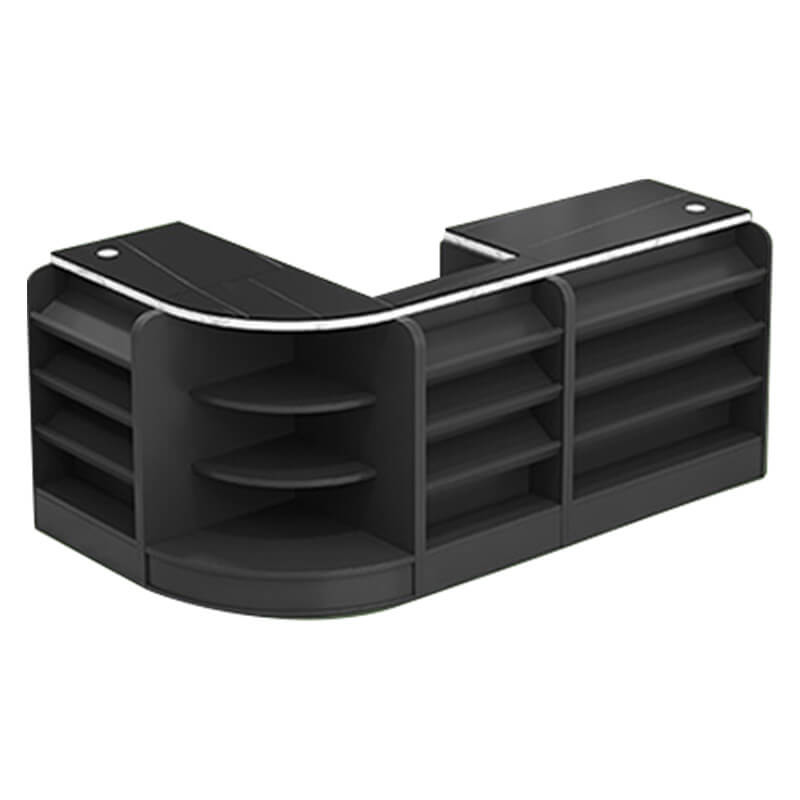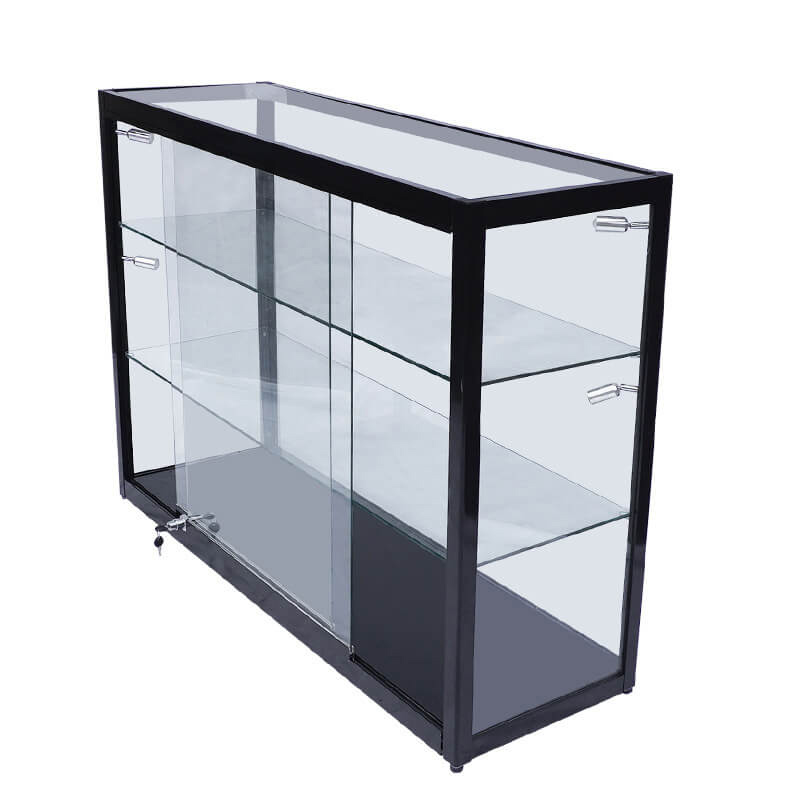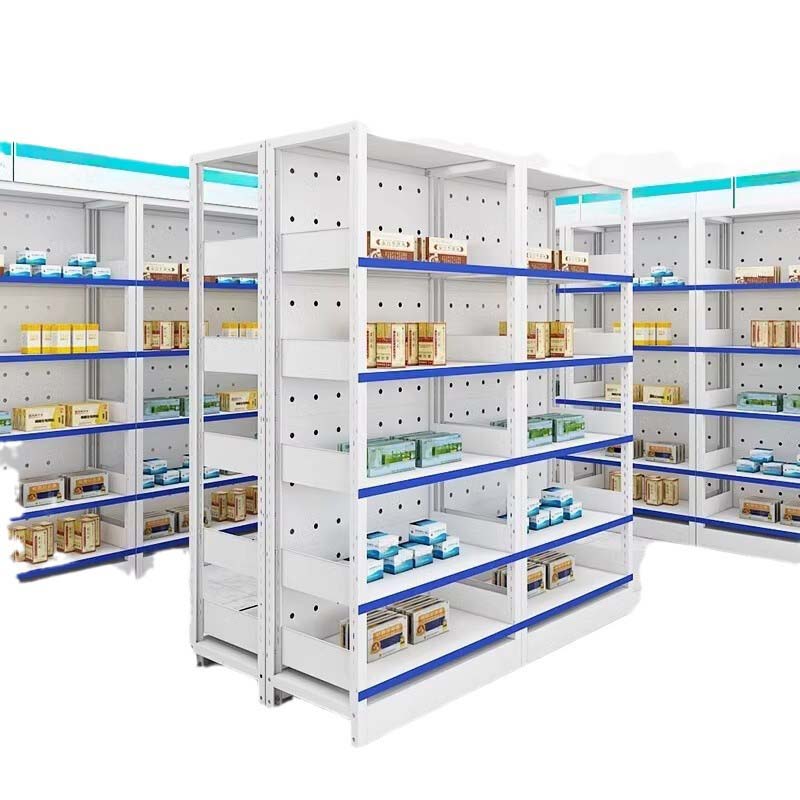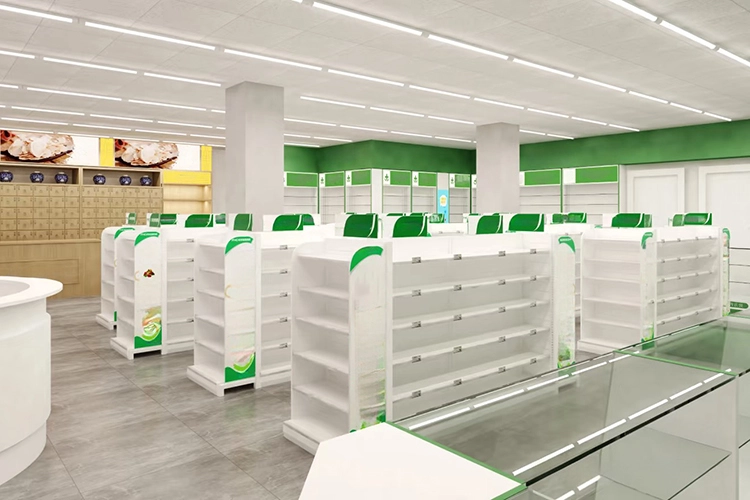
Design de Farmácia
O design de farmácia é um aspecto crucial para criar um negócio de farmácia bem-sucedido. Envolve planejar cuidadosamente o layout, escolher acessórios apropriados e criar um ambiente que seja funcional para a equipe e acolhedor para os clientes. Uma loja médica bem projetada pode melhorar a eficiência do fluxo de trabalho, aprimorar a experiência do cliente e, finalmente, impulsionar as vendas.
Ideias de design para lojas médicas
Os designs modernos de lojas médicas focam em linhas limpas, iluminação ampla e um equilíbrio entre profissionalismo e conforto. Os principais elementos incluem sistemas de prateleiras modulares, designs de balcões ergonômicos e áreas de consulta estrategicamente posicionadas. Esses designs geralmente incorporam tecnologia para melhor gerenciamento de estoque e atendimento ao cliente.
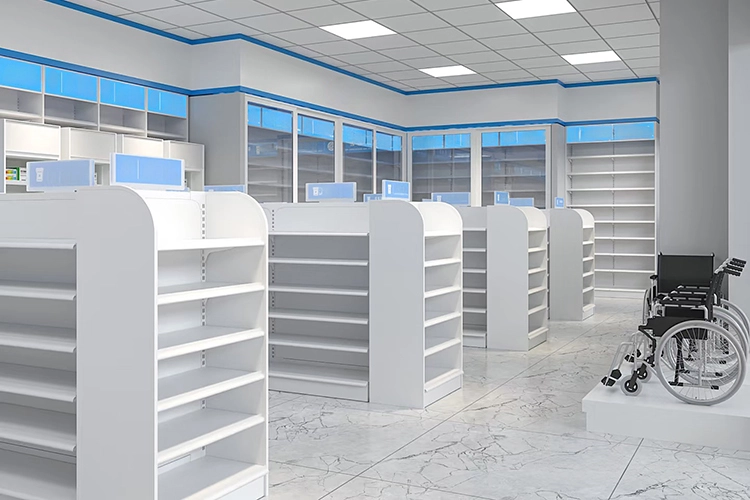
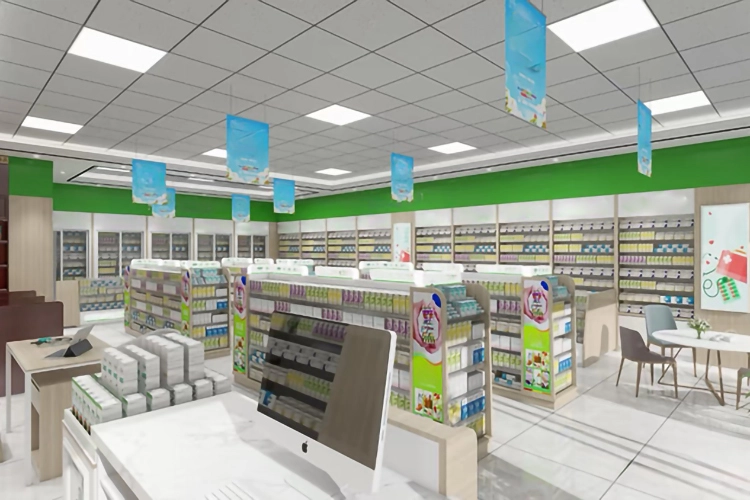
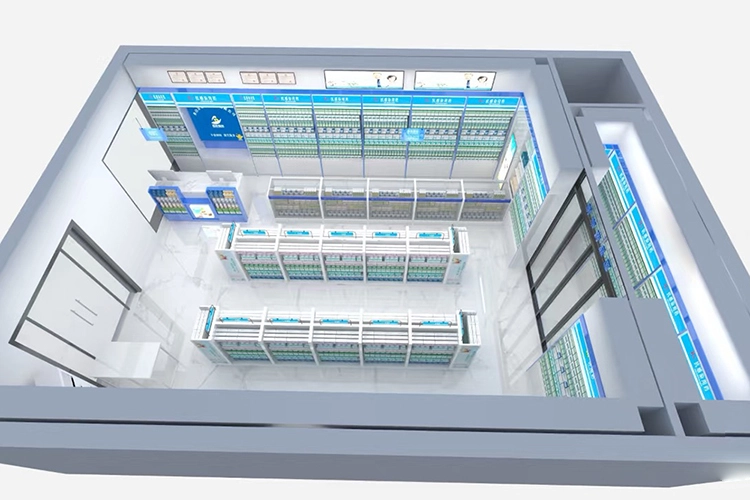
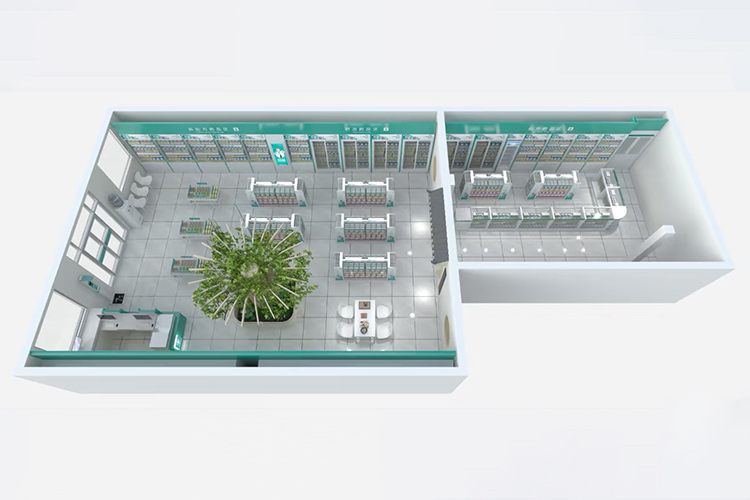

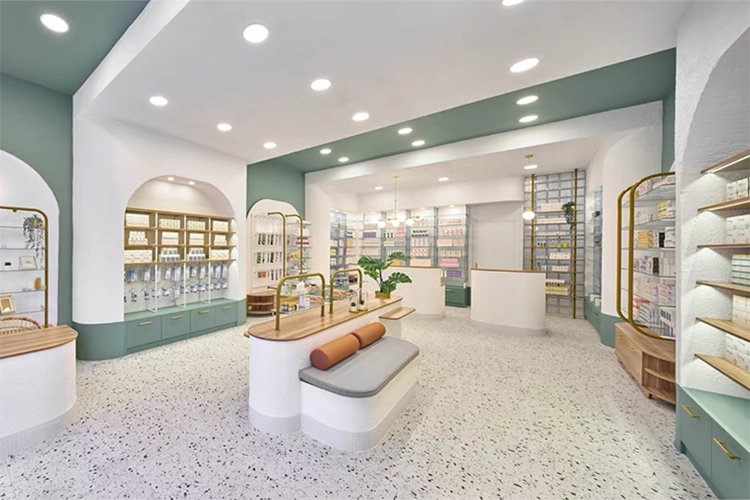
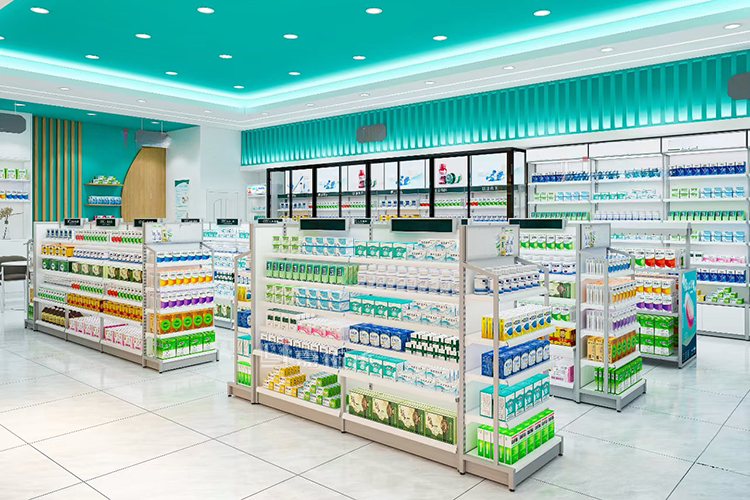
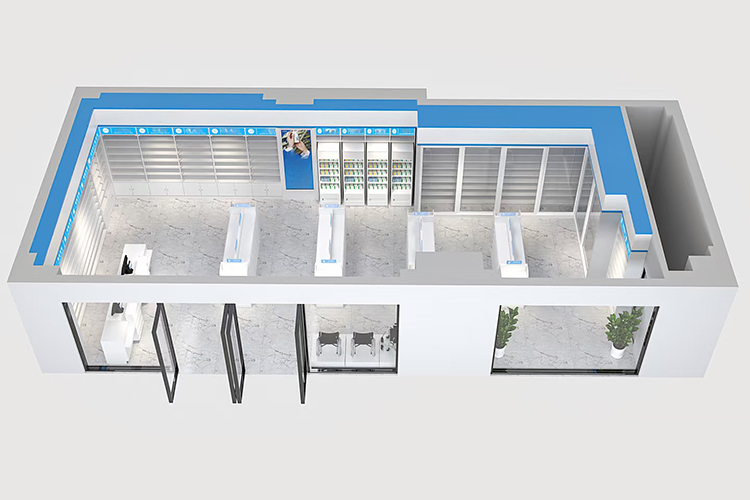
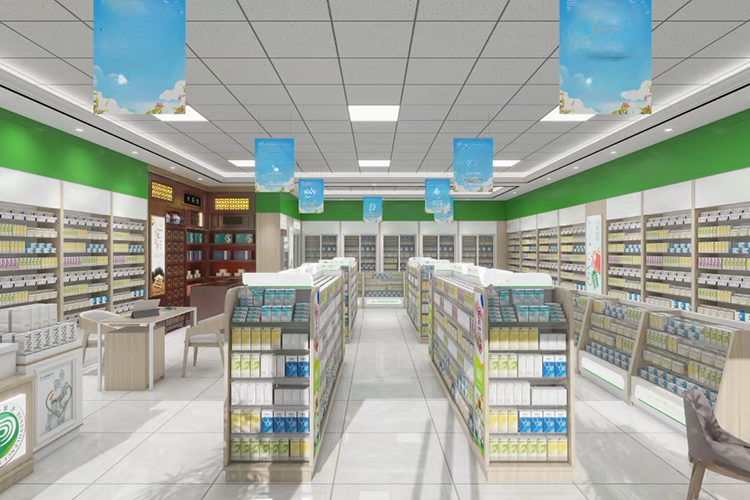
Características de um bom design de farmácia
Projetar uma farmácia envolve muito mais do que apenas organizar prateleiras e produtos — é criar um espaço que promova eficiência e satisfação do cliente. Um design de farmácia bem pensado pode melhorar o fluxo de trabalho, aprimorar a experiência do paciente e impulsionar as vendas.
Layout centrado no cliente
Sinalização clara: Use placas fáceis de ler para orientar os clientes para diferentes seções, como retirada de receitas, medicamentos de venda livre e consultas de saúde.
Design de Espaço Aberto: Evite a superlotação de prateleiras e expositores, criando uma atmosfera convidativa, aberta e fácil de navegar.
Acessibilidade: Garanta corredores largos e prateleiras mais baixas para facilitar o acesso, principalmente para pessoas com deficiência.
Fluxo de trabalho eficiente e organização de pessoal
Espaço atrás do balcão: Deve incluir espaços dedicados para tarefas como composição e dispensação.
Gestão de inventário: Sistemas de prateleiras automatizados ou inteligentes podem ajudar na recuperação rápida.
Áreas de Consulta Privada: Designe áreas onde os farmacêuticos podem fornecer consultas confidenciais aos pacientes.
Iluminação e Ambiente
Iluminação brilhante e orientada para tarefas: Garanta que as áreas onde os farmacêuticos trabalham, como balcões e áreas de preparação de receitas, sejam bem iluminadas. Isso aumenta a eficiência e reduz erros.
Iluminação suave e ambiente: Para áreas voltadas para o cliente, considere uma iluminação suave e quente para criar um ambiente confortável e acolhedor que incentive visitas mais longas.
Experiência e conforto do paciente
Assentos confortáveis: Especialmente para clientes idosos ou aqueles com condições crônicas que podem precisar esperar por receitas ou consultas, a disposição dos assentos é essencial.
Exibições de saúde e bem-estar: Use o espaço para promover produtos ou serviços de bem-estar, como vacinas contra gripe ou exames de saúde, que podem aumentar o engajamento e as vendas.
Flexibilidade e crescimento futuro
Prateleiras modulares: Sistemas modulares que podem ser facilmente reconfigurados permitem futuras mudanças no layout sem grandes revisões.
Espaço para Tecnologia: À medida que as farmácias adotam cada vez mais ferramentas digitais, ofereça espaços para integração de tecnologia, como sistemas de autoatendimento, gerenciamento digital de prescrições e muito mais.
Branding e apelo visual
Esquemas de cores: Escolha cores que evoquem uma sensação de confiança e calma, como azul e verde, que geralmente são associados à saúde e ao bem-estar.
Elementos de marca consistentes: Incorpore logotipos, fontes e outros elementos da marca em todo o design para reforçar o reconhecimento da marca e criar uma atmosfera coesa.
Layouts de lojas médicas
Ao planejar layouts de design de farmácias, é essencial considerar tanto a funcionalidade quanto o fluxo de clientes. O layout deve guiar os clientes pela loja logicamente, ao mesmo tempo em que garante operações eficientes para a equipe.
Deve ser espaçoso e acolhedor, com sinalização clara direcionando os clientes para as diferentes seções da loja.
Posicione produtos OTC de movimento rápido perto da entrada para fácil acesso. Use prateleiras em camadas para maximizar a visibilidade e agrupe produtos relacionados para conveniência do cliente.
O coração da farmácia deve ser facilmente visível da entrada. Projete o balcão para permitir um fluxo de trabalho eficiente, com espaço suficiente para vários funcionários trabalharem confortavelmente.
Implemente sistemas de armazenamento eficientes atrás do balcão para medicamentos prescritos. Considere usar sistemas de dispensação automatizados para economizar tempo e reduzir erros.
Crie seções claramente definidas para diferentes categorias de produtos, como cuidados com a pele, vitaminas e suprimentos de primeiros socorros. Use end-caps e displays promocionais para destacar ofertas especiais.
Posicione os caixas estrategicamente para gerenciar filas de forma eficaz e evitar congestionamentos em áreas de alto tráfego.
Solução de personalização completa da iYubo
A iYubo fornece soluções de personalização abrangentes para farmácias, oferecendo designs personalizados que atendem a necessidades e preferências específicas. Nossa equipe de especialistas trabalha em estreita colaboração com os clientes para criar espaços de farmácia exclusivos, funcionais e atraentes que melhoram tanto a experiência do cliente quanto a eficiência operacional.
- Superfície de trabalho espaçosa para preparação de receitas
- Gavetas seguras para armazenamento de medicamentos
- Sistema de ponto de venda integrado
- Divisória de vidro para higiene e segurança
- Prateleiras montadas na parede para maximizar o espaço vertical
- Unidades de gôndola autônomas para opções de layout flexíveis
- Prateleiras de vidro ou acrílico para um visual moderno e limpo
- Vitrines iluminadas para produtos premium
- Vitrines de balcão para compras por impulso
- Caixas com temperatura controlada para itens sensíveis
- Expositores de extremidade para itens promocionais
- Stands rotativos para produtos sazonais
- Elevadores em camadas para itens pequenos, como vitaminas e suplementos
- Telas digitais para informações e promoções de saúde
- Porta-brochuras para materiais de educação em saúde
- Molduras de cartaz para campanhas de conscientização
- Cabine ou sala de consulta privada
- Assentos confortáveis para pacientes
- Mesa ou escrivaninha para papelada e discussões
- Assentos confortáveis
- Porta-revistas ou tablets digitais para entretenimento
- Dispensador de água e porta-copos descartáveis
- Placas de departamento de overhead
- Marcadores de corredor para fácil navegação
- Diretório digital para localização de produtos
- Unidades de bancada para compras de última hora
- Sistemas de merchandising de filas
- Unidades refrigeradas para medicamentos sensíveis à temperatura
- Área de composição com equipamento específico (se aplicável)
- Sistemas de distribuição automatizados para eficiência
- Balcões mais baixos ou seções de altura ajustável para usuários de cadeira de rodas
- Sinalização em Braille para clientes com deficiência visual
- Dispensadores de desinfetante para as mãos
- Dispensadores de máscaras e luvas
- Marcadores de distanciamento social no chão
Guia passo a passo ───
Como projetar uma pequena loja médica
- Crie um caminho claro da entrada ao balcão
- Use um layout em formato de U ou L para maximizar os espaços nos cantos
- Implementar um design de “pista de corrida” para guiar os clientes por todas as seções
- Instalar estantes do chão ao teto
- Use painéis perfurados ou paredes de ripas para exibir produtos de forma flexível
- Incorpore armazenamento superior para excesso de estoque
- Projete um balcão que sirva como área de distribuição e check-out
- Crie um espaço de consulta que também funcione como uma área de triagem privada
- Use móveis móveis para espaços adaptáveis
- Implemente gavetas e armários removíveis para armazenamento eficiente
- Use sistemas de prateleiras modulares para fácil reconfiguração
- Instalar dispensadores de parede para itens comuns
- Use iluminação LED brilhante e com baixo consumo de energia para criar uma ilusão de espaço
- Opte por uma paleta de cores claras para fazer o espaço parecer maior
- Incorpore espelhos estrategicamente para aumentar a sensação de abertura
- Implementar um sistema compacto de ponto de venda
- Use sinalização digital para informações e promoções de produtos
- Considere sistemas de distribuição automatizados para economizar espaço e melhorar a eficiência
- Foco em itens de movimentação rápida e serviços essenciais
- Use a análise de dados para otimizar o estoque e reduzir o excesso de estoque
- Implementar um sistema de inventário just-in-time para minimizar as necessidades de armazenamento
- Use sinalização clara para direcionar os clientes
- Implementar um sistema de gerenciamento de filas para evitar congestionamentos
- Crie uma pequena área de espera com opções de assentos que economizem espaço
- Use janelas grandes para tornar o interior visível e convidativo
- Instale uma placa chamativa e bem iluminada para maior visibilidade
- Considere um toldo compacto para proteção contra intempéries e branding
- Garantir que os corredores sejam largos o suficiente para acesso de cadeira de rodas (mínimo 36 polegadas)
- Instale uma campainha ou porta automática para facilitar a entrada
- Use balcões com altura ajustável para acomodar todos os clientes
Trabalhe com o iYubo para otimizar a exibição da sua loja.
Como fabricante e fornecedor de displays de varejo personalizados, oferecemos uma gama completa de displays e acessórios com qualidade confiável para atender a todos os requisitos de varejo. Diga-nos suas necessidades e nossas equipes de produção e fornecimento fornecerão a solução mais econômica e eficiente.
